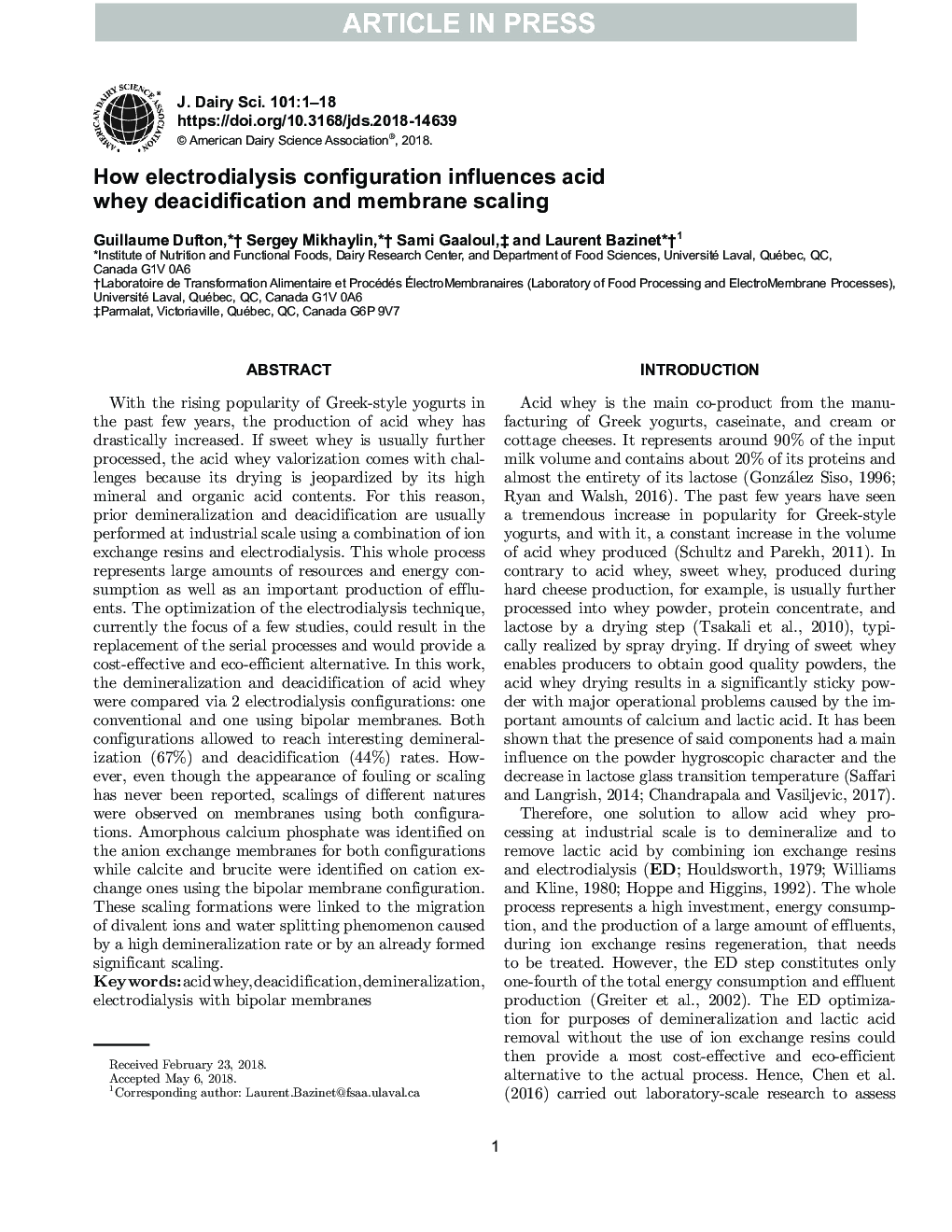| Article ID | Journal | Published Year | Pages | File Type |
|---|---|---|---|---|
| 8956447 | Journal of Dairy Science | 2018 | 18 Pages |
Abstract
With the rising popularity of Greek-style yogurts in the past few years, the production of acid whey has drastically increased. If sweet whey is usually further processed, the acid whey valorization comes with challenges because its drying is jeopardized by its high mineral and organic acid contents. For this reason, prior demineralization and deacidification are usually performed at industrial scale using a combination of ion exchange resins and electrodialysis. This whole process represents large amounts of resources and energy consumption as well as an important production of effluents. The optimization of the electrodialysis technique, currently the focus of a few studies, could result in the replacement of the serial processes and would provide a cost-effective and eco-efficient alternative. In this work, the demineralization and deacidification of acid whey were compared via 2 electrodialysis configurations: one conventional and one using bipolar membranes. Both configurations allowed to reach interesting demineralization (67%) and deacidification (44%) rates. However, even though the appearance of fouling or scaling has never been reported, scalings of different natures were observed on membranes using both configurations. Amorphous calcium phosphate was identified on the anion exchange membranes for both configurations while calcite and brucite were identified on cation exchange ones using the bipolar membrane configuration. These scaling formations were linked to the migration of divalent ions and water splitting phenomenon caused by a high demineralization rate or by an already formed significant scaling.
Related Topics
Life Sciences
Agricultural and Biological Sciences
Animal Science and Zoology
Authors
Guillaume Dufton, Sergey Mikhaylin, Sami Gaaloul, Laurent Bazinet,
